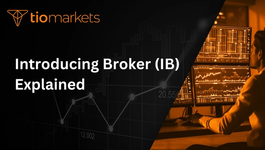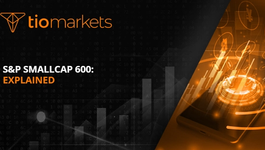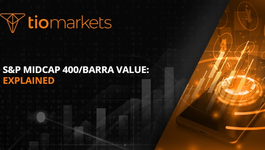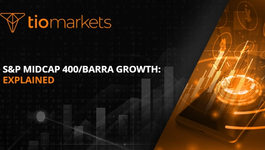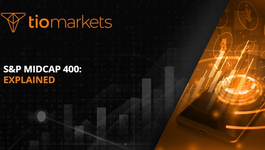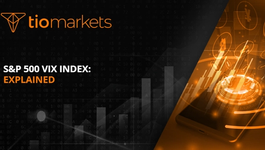Preferred dividends: Explained
BY TIOmarkets
|August 14, 2024In the world of finance and trading, the term 'Preferred Dividends' holds a significant position. This article aims to provide an in-depth understanding of preferred dividends, their importance in trading, and how they impact the financial market. Preferred dividends are the dividends that are accrued on preferred stocks. These dividends are paid out to shareholders before any dividends are paid to common stockholders.
Preferred dividends are a crucial aspect of trading, particularly for investors who prioritize income generation. They offer a more stable income stream compared to common dividends, making them an attractive option for risk-averse investors. This article will delve into the intricacies of preferred dividends, exploring their characteristics, benefits, and potential drawbacks.
Understanding Preferred Dividends
Preferred dividends are profits distributed by a corporation to the owners of its preferred stock. The rate of these dividends is usually fixed and is often expressed as a percentage of the par value of the preferred stock. The key feature of preferred dividends is their priority over common dividends. In other words, a company must pay dividends to preferred shareholders before common shareholders.
It's important to note that preferred dividends are not guaranteed. If a company doesn't generate enough profit in a given period, it may skip dividend payments. However, with cumulative preferred stocks, any unpaid dividends will accumulate and must be paid out before any dividends are given to common stockholders.
Features of Preferred Dividends
Preferred dividends have several unique features that distinguish them from common dividends. Firstly, they offer a fixed dividend, which provides investors with a predictable income stream. This is particularly beneficial for income-focused investors who rely on regular payouts.
Secondly, preferred dividends have a higher claim on company earnings and assets. This means that in the event of bankruptcy, preferred shareholders are paid before common shareholders. However, they are still behind debt holders in the payment hierarchy.
Types of Preferred Dividends
There are two main types of preferred dividends: non-cumulative and cumulative. Non-cumulative preferred dividends do not accrue unpaid dividends. If a company decides not to pay dividends in a given period, those dividends are lost for the shareholders.
On the other hand, cumulative preferred dividends accrue any unpaid dividends. If a company misses a dividend payment, it is added to the next payment period. This continues until the company pays all the outstanding dividends. This feature provides an additional layer of security for preferred shareholders.
Role of Preferred Dividends in Trading
Preferred dividends play a significant role in trading and investment strategies. They offer a steady income stream, which can be an attractive feature for certain types of investors. Moreover, the priority of preferred dividends in payment and in case of bankruptcy provides a level of security that can be appealing to risk-averse investors.
Preferred dividends also influence a company's financial ratios, which are often used by traders to assess a company's financial health. For instance, the Dividend Payout Ratio, which measures the proportion of earnings paid out as dividends, will be affected by the amount of preferred dividends paid.
Preferred Dividends and Income-focused Investors
Income-focused investors, such as retirees or those looking for steady cash flow, may be particularly attracted to preferred dividends. The fixed and often higher rate of preferred dividends can provide a reliable and relatively high income stream. This can be a significant advantage in periods of low interest rates when other income-generating investments may not yield as much.
However, it's important to note that while preferred dividends can offer higher yields, they also come with risks. For instance, if a company faces financial difficulties and cannot pay its dividends, preferred shareholders could lose out on expected income.
Preferred Dividends and Risk Management
From a risk management perspective, preferred dividends offer certain advantages. The priority of preferred dividends in payment and in case of bankruptcy can provide a buffer against losses. This is particularly relevant for risk-averse investors or those investing in companies with uncertain financial futures.
However, like all investments, preferred dividends are not without risk. The fixed dividend rate means that preferred shareholders may not benefit from a company's growing profits. Additionally, preferred shares often have fewer voting rights than common shares, which could limit investors' control over the company.
Impact of Preferred Dividends on Market Dynamics
Preferred dividends can influence market dynamics in several ways. They can affect a company's stock price, its attractiveness to investors, and its capital structure. Understanding these impacts can help traders make informed decisions.
For instance, a high preferred dividend payout can make a company's stock more attractive to income-focused investors, potentially driving up the stock price. On the other hand, if a company consistently fails to pay its preferred dividends, it could signal financial instability, which could drive down the stock price.
Preferred Dividends and Stock Price
The payment of preferred dividends can influence a company's stock price. Regular and high dividend payouts can make a company's preferred stock more attractive to investors, potentially driving up the price. Conversely, if a company misses dividend payments, it could signal financial instability, potentially driving down the price.
It's also worth noting that preferred dividends are typically considered a fixed expense. Therefore, a company with high preferred dividend obligations may have less flexibility to invest in growth opportunities, which could impact its long-term stock price.
Preferred Dividends and Capital Structure
Preferred dividends can also impact a company's capital structure. Because preferred dividends are typically fixed, they can increase a company's fixed costs, potentially affecting its financial stability. However, issuing preferred stock can also be a way for companies to raise capital without diluting ownership, as is the case with issuing additional common stock.
From a trader's perspective, understanding a company's capital structure, including its preferred dividend obligations, can provide insights into its financial health and stability. This can be a crucial factor in investment decision-making.
Conclusion
In conclusion, preferred dividends are a key component of the financial market and trading. They offer benefits such as a steady income stream and priority in payment, making them an attractive option for certain types of investors. However, they also come with risks and can impact a company's financial ratios, stock price, and capital structure.
As with any investment, it's important for traders to understand the intricacies of preferred dividends and to consider them in the context of their overall trading strategy and risk tolerance. By doing so, they can make informed decisions that align with their financial goals.
Start Trading with Preferred Dividends on TIOmarkets
Ready to elevate your trading strategy with the advantages of preferred dividends? Join TIOmarkets, a top-rated forex broker offering a robust online trading platform. With over 170,000 accounts opened across more than 170 countries, we provide access to trade over 300 instruments across 5 markets, including Forex, indices, stocks, commodities, and futures, all with low fees. Enhance your trading skills with our comprehensive educational resources and step-by-step guides. Take the first step towards a successful trading journey by creating a Trading Account today!

Risk disclaimer: CFDs are complex instruments and come with a high risk of losing money rapidly due to leverage. You should consider whether you understand how CFDs work and whether you can afford to take the high risk of losing your money. Never deposit more than you are prepared to lose. Professional client’s losses can exceed their deposit. Please see our risk warning policy and seek independent professional advice if you do not fully understand. This information is not directed or intended for distribution to or use by residents of certain countries/jurisdictions including, but not limited to, USA & OFAC. The Company holds the right to alter the aforementioned list of countries at its own discretion.
Join us on social media

Behind every blog post lies the combined experience of the people working at TIOmarkets. We are a team of dedicated industry professionals and financial markets enthusiasts committed to providing you with trading education and financial markets commentary. Our goal is to help empower you with the knowledge you need to trade in the markets effectively.
